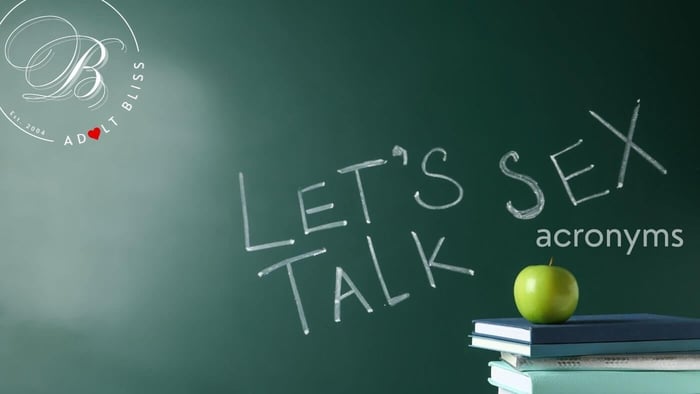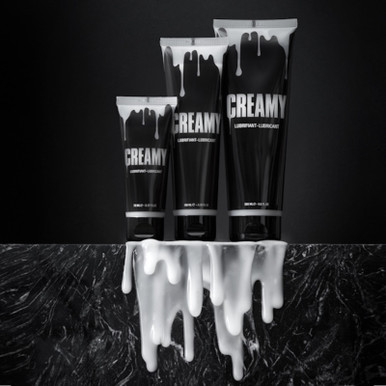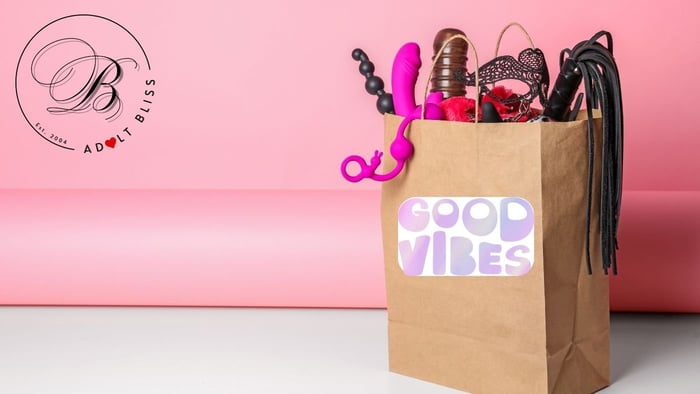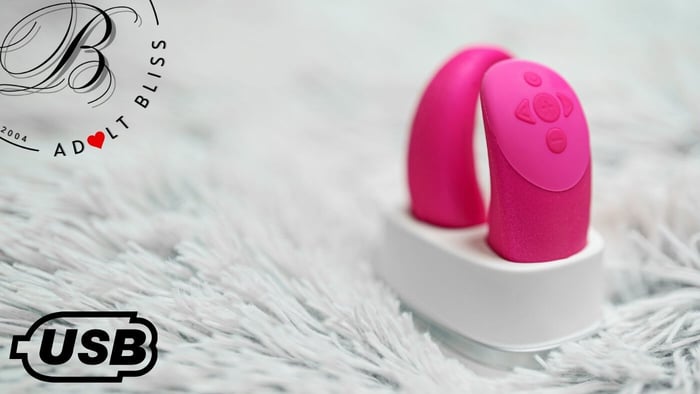
Sexual Acronyms A-Z: What They Really Mean + Why It Matters
Jump To Section
- Sexual Acronyms "From BDSM to CNC to RACK — What Does It All Mean?"
- It’s all about informed consent
- Navigating Instagram Censorship Guidelines
- History of Sexual Acronyms
- New Gen Z Sex Slang:
- BDSM & Kink Acronyms:
- “Not just leather and whips
- 1. BDSM – Bondage & Discipline, Dominance & Submission, Sadism & Masochism
- 2. SSC – Safe, Sane, and Consensual
- 3. RACK – Risk-Aware Consensual Kink
- 4. TPE – Total Power Exchange
- 5. D/s – Dominant/submissive
- 6. S/m – Sadism/masochism
- 7. CBT – Cock and Ball Torture
- 8. DD/lg / MD/lb – Daddy Dom/little girl & Mommy Dom/little boy
- 9. Subdrop / Domdrop
- 10. Aftercare
- 11. CNC – Consensual Non-Consent (content warning)
- Classic Queer Terms:
- 1. LGBTQIA+ – Lesbian, Gay, Bisexual, Transgender, Queer or Questioning, Intersex, Asexual + more
- 2. AFAB / AMAB – Assigned Female/Male at Birth
- 3. NB / Enby – Non-Binary
- 4. QPR – Queerplatonic Relationship
- 5. MSM / WSW – Men who have sex with men / Women who have sex with women
- 6. GNC – Gender Non-Conforming
- 7. TPR – Transgender Pride Representation
- 8. TERF – Trans-Exclusionary Radical Feminist
- 9. Femme / Masc
- 10. Bear
- 11. Twink
- 12. Femme / Butch / Androgynous
- Tried-and-True: Common Sexual Acronyms & Relationship Terms
- “The classics, the everyday essentials, and the ‘wait… that’s what it means?!’ moments.”
- 1. ENM – Ethical Non-Monogamy
- 2. Poly / Polyamory
- 3. ONS – One-Night Stand
- 4. NSA – No Strings Attached
- 5. FB – Fuck Buddy
- 6. FWB – Friends With Benefits
- 7. PDA – Public Displays of Affection
- 8. V – Vulva / Vagina
- 9. PIV / PIA / PIB – Penis-in-Vagina / -Anus / -Butt
- 10. STD / STI – Sexually Transmitted Disease / Infection
- 11. PrEP / PEP – Pre-/Post-Exposure Prophylaxis
- 12. LDR – Long-Distance Relationship
- 13. Demisexual
- 14. Top / Bottom / Switch
- 15. Libido
- 16. Monogamish
- 17. Compersion
- 18. SFW / NSFW – Safe for Work / Not Safe for Work
- 19. Vanilla
- Bonus Round: Sex Worker Specific Acronyms You Might See (But Maybe Don’t Want to Ask About Out Loud)
- 1. CIP – Cum In Pussy
- 2. GS – Golden Shower
- 3. NAT – Natural
- 4. SEX – (Yeah, but what does it mean?)
- 5. BLS – Ball Licking/Sucking
- 6. NGFE – Non-Girlfriend Experience
- 7. COF – Cum On Face
- 8. COB – Cum On Body
- 9. CIM – Cum In Mouth
- 10. CIMWS / CIMWSDFK – Cum In Mouth With Swallow / …Swallow Don’t French Kiss
- 11. BBBJ – Bareback Blowjob
- 12. DATY – Dining At The Y
- 13. PSE – Porn Star Experience
- You Don’t Need to Learn the Whole Alphabet Overnight
- TL;DR
Sexual Acronyms "From BDSM to CNC to RACK — What Does It All Mean?"
Been Sexting lately?
If you’ve ever found yourself deep in a comment section or dating app profile wondering if you’ve accidentally wandered into an encrypted code, you’re not alone. The world of sexual acronyms is vast, fascinating, and — let’s be real — a little intimidating at first glance.
It’s all about informed consent
But here’s the thing: these letters aren’t just trendy shorthand or niche internet slang. They’re powerful tools for communication, boundaries, and expression. Sexual acronyms and language help us name our desires, understand others’ preferences, and navigate intimacy with clarity and consent.
 Navigating Instagram Censorship Guidelines
Navigating Instagram Censorship Guidelines
They’ve also become essential in navigating the increasingly censored world of online sexuality. Social media platforms — governed by ever-tightening algorithms and vague "community guidelines" — often suppress sex-positive content, especially when it’s queer, kink-friendly, or educational. Acronyms offer a way to talk about sex, pleasure, and identity without triggering bans, blocks, or shadowbans.
History of Sexual Acronyms
This need for coded language isn’t new. Throughout history, sexual expression — especially anything outside the heteronormative or reproductive — has been silenced by ruling powers, religious institutions, and social taboos. From Victorian euphemisms to queer zines passed hand to hand, covert communication has always been part of the sexual revolution.
So whether you're just starting to explore or you’ve been around the block (or dungeon), this guide will help you decode the most common — and some of the lesser-known — sexual acronyms. No shame, no fluff, just real talk with a respectful, sex-positive lens.
Let’s get alphabetical.
Okay, now that we’ve laid the groundwork, let’s break it all down — acronym style. To keep things digestible (and a little fun), we’ve split them into four categories. We’ll kick off with some newer Gen Z slang that’s taking over TikTok and Reddit threads, then dive into the rich world of BDSM and kink. From there, we’ll explore classic queer terms that have shaped sexual identity and community for decades. And finally, we’ll wrap up with some of the most common and widely-used sexual acronyms you’re likely to see everywhere from dating apps to educational workshops.
 Buckle up — the glossary’s about to get juicy.
Buckle up — the glossary’s about to get juicy.
New Gen Z Sex Slang:
“Wait... are we still speaking English?”
Welcome to the wild west of modern sex slang — where memes meet meaning, and acronyms are part TikTok trend, part secret language. These terms are fresh, often funny, and sometimes confusing, but they’re shaping how younger folks talk about sex, identity, and kink online.
1. NRE – New Relationship Energy
That fizzy, butterflies-in-your-brain feeling when you're first into someone. Everything they do is amazing. Even their chewing. Common in polyamorous circles, but relatable to monogamous folks too.
2. LDBF/GF – Long-Distance Boyfriend/Girlfriend
A little acronymic love for those who are keeping the fire alive across time zones. Often pops up in TikTok comment sections and Discord chats.
3. Thirst Trap
Not an acronym, but a Gen Z staple. A sexy or suggestive selfie posted to attract attention — usually with just enough plausible deniability to say “who, me?”
4. DNI – Do Not Interact
A boundary-setting term used in bios or posts, often followed by specifics like “DNI if you're under 18” or “DNI if you kink-shame.” It’s internet shorthand for “this space isn’t for you.”
5. Rizz – Charisma, but make it hot
Short for “charisma,” used to describe someone’s seductive or flirtatious skill. “That person’s got mad rizz” = they’re effortlessly sexy and charming.
Magic Wand Rechargeable

$249.95
The Magic Wand® Rechargeable consistently sits atop reviewers’ and mainstream publications’ lists of best vibrators. Named “best overall” by the New York Times three years...… read more
6. S.A.D. – Sexual Attention Deficit
Not a clinical term, but a cheeky way of saying “I haven’t been touched in so long I might start flirting with the couch.” Often used self-deprecatingly online.
7. Smash or Pass
Again, not an acronym, but too culturally relevant to skip. A viral format where people rate if they'd “smash” (have sex with) or “pass” (not interested). Often used humorously, but it can open up convos around attraction and preference.
8. KTP – Kitchen Table Polyamory
A newer take on polyam relationships where everyone’s comfy enough to sit around the kitchen table together — even if they’re not romantically involved. It's about transparency, connection, and community.
BDSM & Kink Acronyms:
“Not just leather and whips
(but also… sometimes leather and whips).”
The BDSM world is full of shorthand that helps people communicate desires, limits, and power dynamics — safely, clearly, and consensually. Whether you’re curious, cautious, or already collared, these acronyms help define the kink space with clarity and consent at the core.

1. BDSM – Bondage & Discipline, Dominance & Submission, Sadism & Masochism
The big one. A catch-all term for a whole ecosystem of kink, power play, and physical/psychological intensity. Think of it as an umbrella — under it lives everything from silk scarves to sensory deprivation.
2. SSC – Safe, Sane, and Consensual
A foundational kink principle. All activities should be safe, agreed upon, and rooted in sound judgment — no risky behavior without full understanding and enthusiastic consent.
3. RACK – Risk-Aware Consensual Kink
A more modern take on SSC. This acknowledges that some kink carries inherent risk, and that’s okay — as long as everyone knows the risks, accepts them, and consents.
4. TPE – Total Power Exchange
This refers to an ongoing dynamic (often 24/7) where one partner gives full authority to the other. It’s extreme — and extremely consensual. Think: lifestyle Dominant/submissive relationships, not just bedroom roleplay.
5. D/s – Dominant/submissive
This one's everywhere in kink spaces. Describes the dynamic where one person takes a leadership or controlling role (Dom), and the other gives up control (sub). Doesn’t always involve pain — but does always involve trust.
6. S/m – Sadism/masochism
A subset of BDSM where the giving or receiving of pain is part of the erotic exchange. A sadist enjoys inflicting pain; a masochist enjoys receiving it. Think spanking, flogging, or mind games… with a safeword.
7. CBT – Cock and Ball Torture
Yes, it’s exactly what it sounds like. Intense stimulation or impact play focused on the genitals. Not for the faint of heart, but for some folks, this is the main event.
8. DD/lg / MD/lb – Daddy Dom/little girl & Mommy Dom/little boy
These dynamics involve age play, caregiving, and soft power exchange. It’s about comfort, structure, and vulnerability — not actual minors. The slash represents the two roles in the dynamic.
Bliss Jute Shibari Rope 6mm x 8m

$14.95
8 Metres of 6mm Jute Rope – Adult Bliss Signature Shibari Rope Unleash your creativity with Adult Bliss’s signature 8 metres of 6mm jute rope,...… read more
9. Subdrop / Domdrop
The emotional “crash” that can happen after an intense scene. Think post-kink comedown — like subspace withdrawal, often leaving someone feeling weepy, drained, or touchy. Aftercare is key!
10. Aftercare
The emotional and physical care that happens after a scene or play session. This can look like cuddling, water, snacks, kind words, or space — whatever helps the participants come down safely and feel cared for.
11. CNC – Consensual Non-Consent (content warning)
Sometimes called “rape play,” CNC is one of the most intense and controversial dynamics in the kink world. It involves one partner pretending to override another’s consent — but only with prior negotiation, limits, and safewords in place. It’s fantasy, not reality, and trust is absolutely everything. No scene should ever happen without explicit, informed, enthusiastic consent from all parties.

Classic Queer Terms:
“Because queer folks have always found a way to name their truths — even when the world tried to silence them.”
This glossary includes terms rooted in activism, identity, and chosen family. Whether you’re new to the queer world or brushing up, these acronyms are key to understanding the rich tapestry of queer experience — and how it intersects with sex, gender, and love.
1. LGBTQIA+ – Lesbian, Gay, Bisexual, Transgender, Queer or Questioning, Intersex, Asexual + more
The umbrella term that keeps growing — because language should evolve with people. The “+” honors the full spectrum of gender and sexual diversity. You’ll also see variations like LGBTQ+, LGBTIQ+, and 2SLGBTQIA+ depending on region and focus.
2. AFAB / AMAB – Assigned Female/Male at Birth
Used to describe the sex someone was designated as at birth, before exploring or affirming their actual gender identity. Useful in discussions around transition, gendered expectations, and physical experience — However, some folks won’t be too keen on these terms as there is a reasonable and strong belief that gender shouldn’t be assigned at birth in the first place.
Underworks 983 Tri-Top Chest Binder

$89.95
Nylon SpandexSizes - Measure Chest-Inches: X-small 28-30 / Small 31-33 / Medium 34-36 / Large 37-40/ X-large 41-44 / 2X 45-48 / 3X 49-52 If...… read more
3. NB / Enby – Non-Binary
A gender identity outside the binary of strictly male or female. Enbies may identify as both, neither, a mix, or something entirely different. Gender? We barely know her.
4. QPR – Queerplatonic Relationship
A deeply committed partnership that isn’t romantic or sexual — but still soul-shakingly important. QPRs challenge traditional ideas of what intimacy “should” look like. Think ride-or-die besties with chosen-family energy.
5. MSM / WSW – Men who have sex with men / Women who have sex with women
Used mostly in medical or research settings to discuss sexual behavior without making assumptions about identity. A reminder: not everyone who sleeps with the same gender identifies as gay, lesbian, or queer.
6. GNC – Gender Non-Conforming
Describes anyone whose gender expression doesn’t follow traditional norms. This could mean clothing, mannerisms, voice, or even body language. It’s not a gender — it’s a vibe.
7. TPR – Transgender Pride Representation
A newer one used mostly online, especially in fan spaces or social commentary. It celebrates authentic representation of trans identities — not just tokenism or tragic storylines.
8. TERF – Trans-Exclusionary Radical Feminist
Not a compliment. Used to describe someone who claims to support feminism but denies trans women’s identities and rights. Think gatekeeping in a nasty outfit.
9. Femme / Masc
Not acronyms, but essential. These terms describe presentation, not gender. A femme can be any gender and rock softness, strength, lipstick, or steel-capped boots. A masc might present with short hair, swagger, and the confidence of a butch barista with a poetry degree.
10. Bear
Big, broad, and often bearded. Bears are typically larger, hairier gay men who embrace a rugged or masculine aesthetic — and a sense of community that’s warm, welcoming, and body-positive. Think: lumberjack energy meets cuddle pile.
11. Twink
Young(ish), slim, smooth, and full of chaotic flirt energy. Twinks often serve looks, sass, and skinny jeans. Culturally iconic and sometimes polarizing, twinks have long been associated with the flashy, femme, and fabulous side of gay male identity.
12. Femme / Butch / Androgynous
These are essential identity labels in many queer communities. Femme embraces softness, style, and sometimes high femme glam. Butch often signals strength, swagger, and protective energy. Androgynous defies binary expectations, mixing masculine and feminine in ways that feel powerful and uniquely personal.
Tried-and-True: Common Sexual Acronyms & Relationship Terms
“The classics, the everyday essentials, and the ‘wait… that’s what it means?!’ moments.”

This list is for the terms that don’t necessarily fall under kink, queer culture, or Gen Z slang — but still shape how we talk about sex, dating, and desire. Whether you're swiping, sexting, or simply trying to decode a bio, these are the ABCs of the modern sexual landscape.
1. ENM – Ethical Non-Monogamy
An umbrella term for relationships where people consensually date or sleep with multiple partners — openly and honestly. It’s not cheating if everyone’s in on it.
2. Poly / Polyamory
A form of ENM where people have (or are open to) multiple loving, romantic relationships. Not to be confused with “open relationships,” which are often more focused on sex than emotional connection.
3. ONS – One-Night Stand
A no-strings-attached encounter. One night, one vibe, maybe a cheeky brunch after (or maybe not).
4. NSA – No Strings Attached
Casual sex with zero expectation of romance, texting back, or helping move furniture. Clear, clean, and communicative (ideally).
Womanizer Enhance

$259.95
EnhanceOrgasms for all What is it?Womanizer‘s first clitoral stimulator, combining We-Vibe vibrations with Pleasure Air Technology for an enhanced sensation. Seperate motors allow you to...… read more
5. FB – Fuck Buddy
A regular sexual partner who’s not a romantic partner. There may be vibes, but there’s also a clear “don’t catch feelings” clause — until someone does, of course.
6. FWB – Friends With Benefits
An older term that’s had a glow-up on Gen Z platforms. These days it’s often used with more nuance, sometimes overlapping with queer platonic relationships or soft poly dynamics.
7. PDA – Public Displays of Affection
Hand-holding, kissing, or full-on making out in public. Cute for some, cringe for others, illegal in certain countries — and often coded queer protest when done by LGBTQ+ folks.
8. V – Vulva / Vagina
You’ll often see this sexual acronym used in medical contexts, sex ed, or content flagged by algorithms. A handy stand-in for people discussing anatomy without getting blocked by a bot.
9. PIV / PIA / PIB – Penis-in-Vagina / -Anus / -Butt
Common in sex ed and queer/kink communities to describe specific sex acts without assuming gender or identity. Less about orientation, more about logistics.

10. STD / STI – Sexually Transmitted Disease / Infection
STI is the more current, inclusive term. Many STIs are easily treatable — shame isn’t.
11. PrEP / PEP – Pre-/Post-Exposure Prophylaxis
Medication that can help prevent HIV infection. PrEP = taken daily before potential exposure. PEP = taken after exposure, within 72 hours. Life-saving and empowering.
12. LDR – Long-Distance Relationship
A romantic/sexual relationship that survives across time zones, buffering screens, and possibly years of patience. Often powered by good communication and excellent sexting.
13. Demisexual
A person who only experiences sexual attraction after forming a strong emotional connection. Not an acronym, but deserves a spot. Often under the asexual spectrum umbrella.
14. Top / Bottom / Switch
Originally from kink and queer contexts, now widely used. A top gives, a bottom receives, a switch does both. Applies to power, position, energy — and more.
15. Libido
Not an acronym, but relevant. Refers to someone’s general level of sexual desire. Can be high, low, fluctuating, or non-existent — all normal.
16. Monogamish
Popularised by Dan Savage — it’s basically monogamy with a few flexible rules. “We’re mostly monogamous, but…” insert agreed-upon wiggle room here.
17. Compersion
That warm, fuzzy feeling you get from seeing your partner happy with someone else — often referenced in poly and ENM circles. Think: the opposite of jealousy.
18. SFW / NSFW – Safe for Work / Not Safe for Work
Used to flag whether content (images, language, etc.) is appropriate for public spaces — or likely to earn you a visit from HR. NSFW = spicy.
19. Vanilla
Not an acronym, but a classic. Describes sex and relationships that don’t involve kink. It’s not an insult — just a flavour preference. Some people love vanilla. Some add sprinkles.
Bonus Round: Sex Worker Specific Acronyms You Might See (But Maybe Don’t Want to Ask About Out Loud)
Heads up:
This set of sexual acronyms is commonly found in sex work listings, adult forums, or very 'ahem' specific corners of the internet. They’re shorthand for services, preferences, and expectations — and while some are self-explanatory, others need decoding. So here’s your cheat sheet. No shame. Just facts.

1. CIP – Cum In Pussy
Refers to internal ejaculation during vaginal sex. This acronym is extremely context-specific and always requires clear, explicit, informed consent. Also: protection matters.
2. GS – Golden Shower
Urinating on a partner as part of a kink or fetish scene. Not for everyone, but a consensual part of some people’s playbook.
3. NAT – Natural
Often shorthand for sex without a condom (i.e., bareback). Like many terms on this list, it's a red flag for consent and safety discussions. Clear boundaries are crucial here.
4. SEX – (Yeah, but what does it mean?)
In some listings, “sex” might be distinguished from oral, fetish, or other activities — meaning full-service penetrative sex, often PIV (penis-in-vagina) or anal, depending on context.
5. BLS – Ball Licking/Sucking
Exactly what it says on the tin. A form of oral stimulation focused on the testicles.
6. NGFE – Non-Girlfriend Experience
The opposite of GFE (Girlfriend Experience). More clinical, no cuddling or “romantic” vibes. Clear boundaries, limited emotional play — just the service.
Creamy Fake Sperm Lubricant

$29.95
Stimulate your imagination and explore the milky way! Pure and milky, Creamy is a premium quality water-based and creamy lubricant whose texture looks like real...… read more
7. COF – Cum On Face
Self-explanatory and often listed in explicit adult content or service menus. Consent and discussion of hygiene always applies.
8. COB – Cum On Body
Ejaculating on the partner’s body, often used in contrast with internal or facial options.
9. CIM – Cum In Mouth
Oral sex ending in ejaculation in the mouth. May or may not involve swallowing — hence the next acronym...
10. CIMWS / CIMWSDFK – Cum In Mouth With Swallow / …Swallow Don’t French Kiss
These are extremely specific acronyms from service-based lingo, especially in escort or pornographic settings. The "DFK" part means no deep French kissing afterwards — a boundary some providers or clients enforce for… reasons.
11. BBBJ – Bareback Blowjob
Oral sex without a condom. Again — informed consent, STI awareness, and mutual agreement are absolutely essential here.

12. DATY – Dining At The Y
Slang for giving oral sex to someone with a vulva. Bonus points for creativity and the visual metaphor.
13. PSE – Porn Star Experience
A type of full-service encounter that includes all the “extras” — things like CIM, COF, dirty talk, roleplay, rougher sex, etc. Basically: the works. The fantasy. Often in contrast to GFE (which mimics more romantic/connected vibes).
You Don’t Need to Learn the Whole Alphabet Overnight
So, there you have it — a deliciously varied glossary of sexual acronyms, relationship styles, kink terms, and explicit shorthand to help you navigate the world of modern sexuality without feeling like you’re decoding hieroglyphics.
But hey, a little reminder before you run off and update your dating profile:
These definitions aren’t set in stone. Language evolves. Communities adapt. And sometimes, people use the same acronym in slightly different ways depending on where they are, who they’re with, or what their own experience has been.
Our goal here isn’t to provide a hard-and-fast rulebook — just a jumping-off point. A guide. A bit of clarity in the alphabet soup of sexuality.
So, whether you’re curious, kinky, questioning, or just here to learn — you’re welcome. You don’t have to know all the letters to start having better conversations, deeper connections, and way more satisfying sex.
Now go forth and decode, discover, and (enthusiastically) do the things that make you feel good.
FAQs
What are the acronyms?
Each generation has their own version of language that helps to identify preferences and communicate within various communities. In this general guide we have listed terms under Gen z's addition to sexual language, the queer community, the kink scene and relationship terms.
Why do sexual acronyms matter?
Sexual acronyms and language help us name our desires, understand others’ preferences, and navigate intimacy with clarity and consent. They’re powerful tools for communication, boundaries, and expression.
Where do people even use these acronyms?
On Social Media or YouTube sexual acronyms and language are used to avoid censorship. For sex workers, acronyms are an easy way of identifying services for clients and/or content bookings. For those using dating apps, some of these terms might be familiar, people in non-monogamous relationships and the queer community may use them frequently.
Is this a new trend?
This need for coded language isn’t new. Throughout history, sexual expression has been silenced. From Victorian euphemisms to queer zines passed hand to hand, covert communication has always been part of the sexual revolution.
What or who are the sexual acronyms for?
Every generation or community has their own language to discuss sex and sexual identity. Other, more specific, communities like the kink scene and queer community have always had language to describe the boundaries of who they are and what they do.
Why do sexual acronyms change all of the time?
Language evolves, communities adapt, and sometimes people use the same acronym in slightly different ways depending on where they are, who they’re with, or what their own experience has been.











